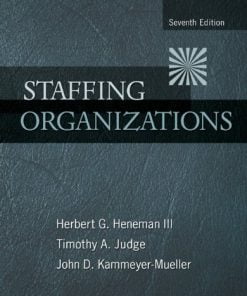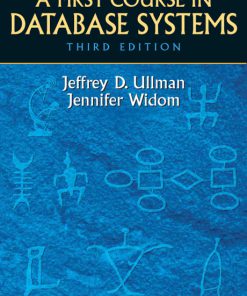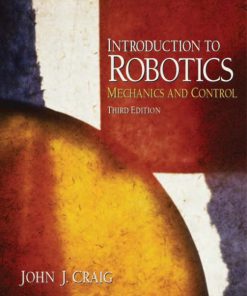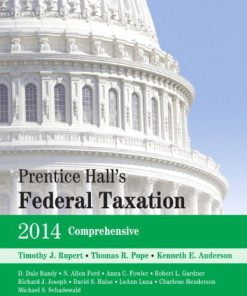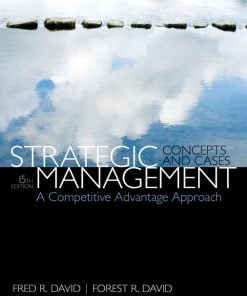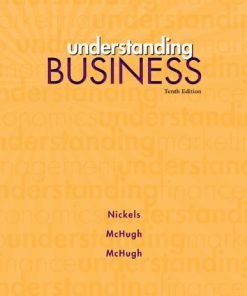Solution Manual for Materials for Civil and Construction Engineers 3rd Edition by Mamlouk
$35.00 Original price was: $35.00.$26.50Current price is: $26.50.
Solution Manual for Materials for Civil and Construction Engineers 3rd Edition by Mamlouk
Instant download Solution Manual for Materials for Civil and Construction Engineers 3rd Edition by Mamlouk pdf docx epub after payment.
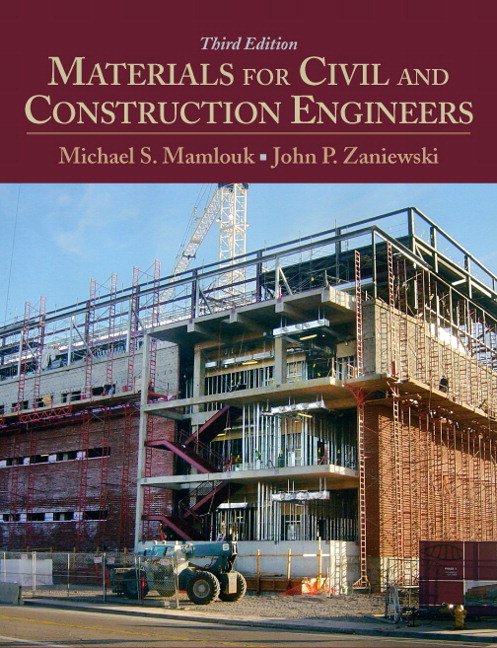
Product details:
- ISBN-10 : 0136110584
- ISBN-13 : 978-0136110583
- Author: John P. Zaniewski
Materials for Civil and Construction Engineers, 3/e is ideal for courses in Civil Engineering Materials, Construction Materials, and Construction Methods and Materials offered in Civil, Environmental, or Construction engineering departments.
This introduction gives students a basic understanding of the material selection process and the behavior of materials — a fundamental requirement for all civil and construction engineers performing design, construction, and maintenance. The authors cover the various materials used by civil and construction engineers in one useful reference, limiting the vast amount of information available to the introductory level, concentrating on current practices, and extracting information that is relevant to the general education of civil and construction engineers. A large number of experiments, figures, sample problems, test methods, and homework problems gives students opportunity for practice and review.
Table of contents:
About the Authors
xviii
Materials Engineering Concepts
1(51)
Economic Factors
2(1)
Mechanical Properties
3(18)
Loading Conditions
4(1)
Stress-Strain Relations
5(1)
Elastic Behavior
5(3)
Elastoplastic Behavior
8(4)
Viscoelastic Behavior
12(5)
Temperature and Time Effects
17(1)
Work and Energy
18(1)
Failure and Safety
18(3)
Nonmechanical Properties
21(3)
Density and Unit Weight
21(1)
Thermal Expansion
22(1)
Surface Characteristics
23(1)
Production and Construction
24(1)
Aesthetic Characteristics
25(1)
Sustainable Design
26(1)
Material Variability
27(5)
Sampling
28(1)
Normal Distribution
29(1)
Control Charts
29(3)
Experimental Error
32(1)
Laboratory Measuring Devices
32(19)
Dial Gauge
33(1)
Linear Variable Differential Transformer (LVDT)
33(4)
Strain Gauge
37(1)
Non-Contact Deformation Measurement Technique
38(1)
Proving Ring
38(1)
Load Cell
39(1)
Summary
40(1)
Questions and Problems
41(10)
References
51(1)
Nature of Materials
52(33)
Basic Materials Concepts
52(6)
Electron Configuration
52(3)
Bonding
55(3)
Material Classification by Bond Type
58(1)
Metallic Materials
58(15)
Lattice Structure
59(4)
Lattice Defects
63(1)
Grain Structure
64(3)
Alloys
67(1)
Phase Diagrams
67(6)
Combined Effects
73(1)
Inorganic Solids
73(2)
Organic Solids
75(9)
Polymer Development, Structure, and Cross-Linking
76(3)
Melting and Glass Transition Temperature
79(1)
Mechanical Properties
80(1)
Summary
81(1)
Questions and Problems
81(3)
References
84(1)
Steel
85(55)
Steel Production
87(2)
Iron-Carbon Phase Diagram
89(4)
Heat Treatment of Steel
93(2)
Annealing
93(1)
Normalizing
94(1)
Hardening
95(1)
Tempering
95(1)
Example of Heat Treatment
95(1)
Steel Alloys
95(2)
Structural Steel
97(9)
Structural Steel Grades
97(3)
Sectional Shapes
100(1)
Specialty Steels in Structural Applictions
101(5)
Cold-Formed Steel
106(3)
Cold-Formed Steel Grades
106(1)
Cold-Formed Steel Shapes
107(2)
Special Design Considerations for Cold-Formed Steel
109(1)
Fastening Products
109(2)
Reinforcing Steel
111(5)
Conventional Reinforcing
111(4)
Steel for Prestressed Concrete
115(1)
Mechanical Testing of Steel
116(10)
Tension Test
116(3)
Torsion Test
119(3)
Charpy V Notch Impact Test
122(2)
Bend Test
124(1)
Hardness Test
124(1)
Ultrasonic Testing
125(1)
Welding
126(3)
Steel Corrosion
129(10)
Methods for Corrosion Resistance
130(1)
Summary
131(1)
Questions and Problems
131(8)
References
139(1)
Aluminum
140(23)
Aluminum Production
143(2)
Aluminum Metallurgy
145(6)
Alloy Designation System
147(1)
Temper Treatments
148(3)
Aluminum Testing and Properties
151(5)
Welding and Fastening
156(1)
Corrosion
157(5)
Summary
157(1)
Questions and Problems
157(5)
References
162(1)
Aggregates
163(47)
Aggregate Sources
164(1)
Geological Classification
165(1)
Evaluation of Aggregate Sources
165(1)
Aggregate Uses
166(1)
Aggregate Properties
167(31)
Particle Shape and Surface Texture
169(2)
Soundness and Durability
171(1)
Toughness, Hardness, and Abrasion Resistance
172(1)
Absorption
173(2)
Specific Gravity
175(2)
Bulk Unit Weight and Voids in Aggregate
177(1)
Strength and Modulus
178(1)
Gradation
178(16)
Cleanness and Deleterious Materials
194(1)
Alkali-Aggregate Reactivity
195(2)
Affinity for Asphalt
197(1)
Handling Aggregates
198(11)
Sampling Aggregates
199(1)
Summary
200(1)
Questions and Problems
200(9)
References
209(1)
Portland Cement, Mixing Water, and Admixtures
210(36)
Portland Cement Production
210(1)
Chemical Composition of Portland Cement
211(2)
Fineness of Portland Cement
213(1)
Specific Gravity of Portland Cement
214(1)
Hydration of Portland Cement
214(4)
Structure Development in Cement Paste
216(1)
Evaluation of Hydration Progress
216(2)
Voids in Hydrated Cement
218(1)
Properties of Hydrated Cement
218(3)
Setting
218(2)
Soundness
220(1)
Compressive Strength of Mortar
221(1)
Water-Cement Ratio
221(1)
Types of Portland Cement
222(4)
Standard Portland Cement Types
222(3)
Other Cement Types
225(1)
Mixing Water
226(2)
Acceptable Criteria
226(2)
Disposal and Reuse of Concrete Wash Water
228(1)
Admixtures for Concrete
228(8)
Air Entrainers
229(1)
Water Reducers
230(3)
Retarders
233(1)
Hydration-Control Admixtures
234(1)
Accelerators
234(1)
Specialty Admixtures
235(1)
Supplementary Cementitious Materials
236(9)
Summary
239(1)
Questions and Problems
240(5)
References
245(1)
Portland Cement Concrete
246(69)
Proportioning of Concrete Mixes
246(20)
Basic Steps for Weight and Absolute Volume Methods
247(16)
Mixing Concrete for Small Jobs
263(3)
Mixing, Placing, and Handling Fresh Concrete
266(8)
Ready-Mixed Concrete
266(1)
Mobile Batcher Mixed Concrete
267(1)
Depositing Concrete
People also search:
Materials for Civil and Construction Engineers 3rd Edition
Materials for Civil and Construction Engineers 3rd Edition pdf
Materials for Civil and Construction Engineers
what materials do civil engineers use
what is civil engineering materials
Related products
Solution Manual
Solution Manual for Introduction to Electrodynamics, 4/E 4th
Solution Manual
Solution Manual
Solution Manual for Introduction to Robotics Mechanics and Control 3rd Edition by Craig
Solution Manual
Management Information Systems Managing the Digital Firm Laudon 14th Edition Solutions Manual
Solution Manual
Prentice Hall’s Federal Taxation 2014 Comprehensive Rupert 27th Edition Solutions Manual
Solution Manual
Solution Manual
Understanding Business Nickels 10th Edition Solutions Manual




